According to research, 90 percent of marketers use content marketing, and 48 percent rely on content marketing automation. By streamlining content creation and allowing for smarter decisions, businesses can nurture qualified leads more effectively.
We explore how automation transforms your marketing strategy by eliminating repetitive tasks and maximizing your team’s creative potential. Modern marketing technology advancements have made it possible to automate time-consuming aspects, allowing you to focus on strategy rather than execution.
By implementing the right automation approach, you can create more consistent content, reach your audience at optimal times, and make data-driven decisions that improve your marketing ROI.
Key Takeaways
- Streamline content creation and allow for smarter decisions
- Maximize your team’s creative potential by eliminating repetitive tasks
- Implement automation to create more consistent content and reach your audience effectively
- Make data-driven decisions to improve your marketing ROI
- Focus on strategy rather than execution with modern marketing technology
What is Content Marketing Automation?
Marketing teams are now leveraging content marketing automation to streamline their workflows and enhance productivity. This strategic approach enables businesses to efficiently manage their content marketing efforts, ensuring consistency and effectiveness.
Definition and Core Concepts
Content marketing automation refers to the use of software and technology to automate repetitive and time-consuming content marketing tasks. At its core, it involves using marketing automation platforms to create, publish, and distribute content across various channels. This includes email marketing, social media, and blogs. By automating routine tasks, marketers can focus on high-level creative decisions and strategy.
| Core Concept | Description |
|---|---|
| Workflow Automation | Streamlining content creation and publication processes |
| Trigger-Based Actions | Executing predefined actions based on specific conditions |
| Integration with Marketing Tools | Seamlessly connecting with CRM, email, and social media tools |
How Content Marketing Automation Works
Content marketing automation works by establishing trigger-based workflows that execute predefined actions when specific conditions are met. For instance, if a new blog post is published, the automation system can automatically share it across social media platforms. Most automation platforms integrate with existing marketing tools, creating a seamless ecosystem where data flows between different systems.
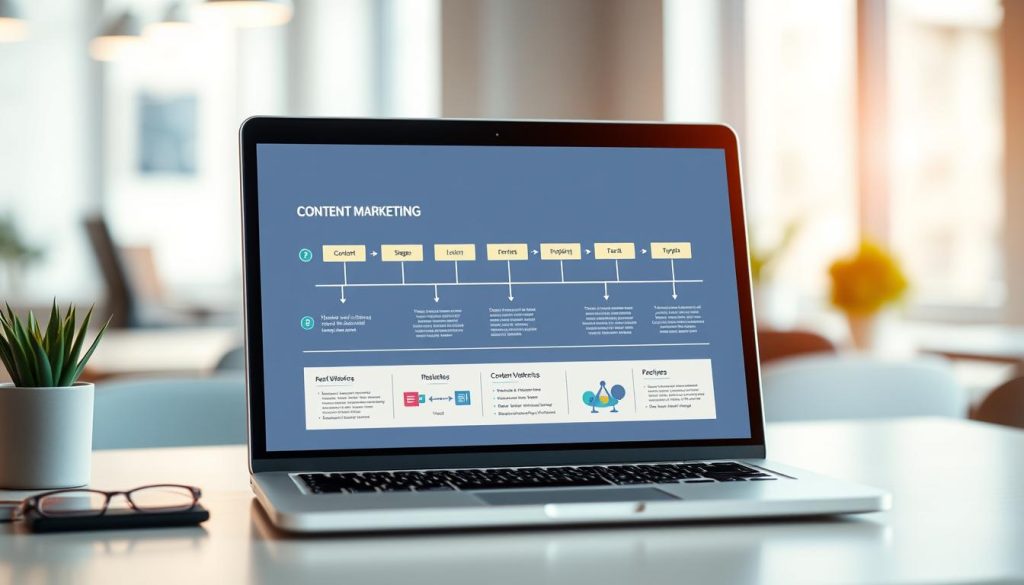
The process involves setting up rules and parameters aligned with marketing goals, then letting the software handle execution while monitoring performance. Modern automation tools offer visual workflow builders that simplify creating complex automation sequences without requiring technical expertise.
The Benefits of Content Marketing Automation
By leveraging content marketing automation, businesses can unlock a multitude of benefits that enhance their overall marketing strategy. Content marketing automation is not just a tool; it’s a strategic approach that transforms how businesses interact with their audience.
Time and Resource Savings
Content marketing automation significantly reduces the time and resources required to manage and execute marketing campaigns. By automating repetitive tasks, marketers can allocate more time to strategic planning and creative work. According to a recent study, companies that implement automation in their marketing processes see a significant reduction in the time spent on mundane tasks.
Improved Productivity and Efficiency
With automation handling routine tasks, marketing teams can focus on high-value tasks that require creativity and strategic thinking. This shift leads to improved productivity and efficiency across the board. As a result, businesses can respond more quickly to market changes and customer needs.

Enhanced Content Consistency
Content marketing automation ensures that your messaging is consistent across all channels and touchpoints. By maintaining a uniform tone and style, businesses can reinforce their brand identity and build trust with their audience. Consistency is key to establishing a strong brand presence in the market.
Data-Driven Decision Making
One of the most significant benefits of content marketing automation is its ability to provide actionable insights through data analytics. By tracking performance metrics such as traffic sources, click-through rates, and engagement levels, businesses can make informed decisions about their marketing strategies. As noted by marketing experts, “Data-driven decision making is the future of marketing, allowing businesses to optimize their strategies based on real-time performance data.”
In conclusion, the benefits of content marketing automation are multifaceted, ranging from time and resource savings to enhanced content consistency and data-driven decision making. By embracing automation, businesses can elevate their marketing efforts and achieve better results.
Content Marketing Tasks You Should Automate
Effective content marketing automation involves identifying and automating repetitive tasks that consume valuable time and resources. By doing so, businesses can optimize their marketing efforts, enhance productivity, and drive better campaign outcomes.
Email Marketing Personalization and Delivery
Email marketing automation tools enable you to personalize and deliver emails at scale. Tools like Mailchimp or Constant Contact can help you automate email workflows, ensuring that the right message reaches the right audience at the right time.

Content Publishing and Scheduling
Content scheduling software allows you to plan, schedule, and publish content across various channels in advance. This not only saves time but also ensures consistency in your content marketing strategy. Tools like Hootsuite or Buffer can be used to schedule posts on social media platforms.
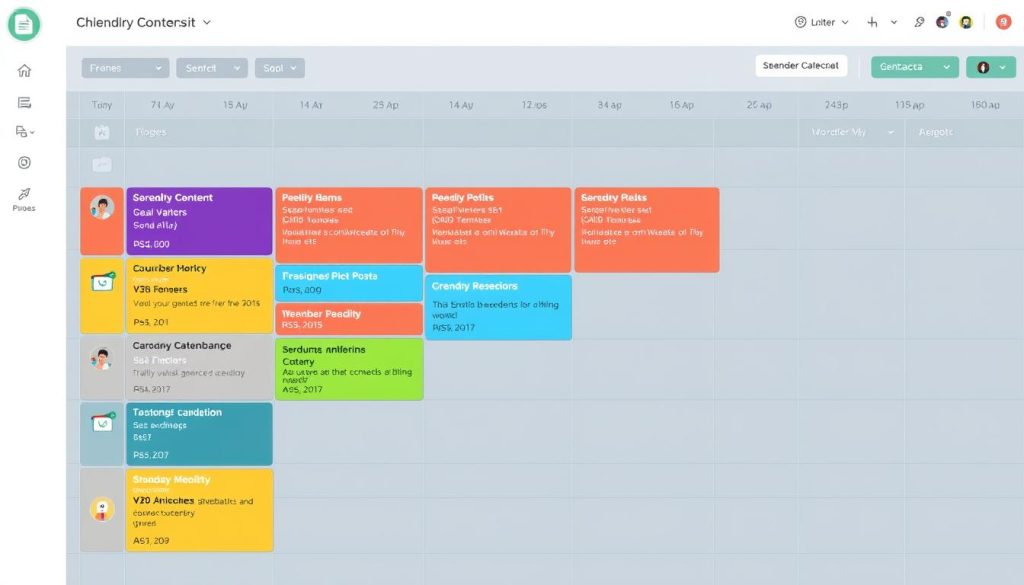
Audience Segmentation
Audience segmentation is crucial for targeted marketing. By automating the process of segmenting your audience based on their preferences and behaviors, you can deliver more relevant content, improving engagement and conversion rates.
Performance Tracking and Analytics
Tracking performance and analytics is vital for refining your content marketing strategy. Automated analytics tools can track key performance indicators across all your content channels, providing real-time data and insights that inform your decisions. With tools like Google Analytics, you can measure content performance, identify patterns, and adjust your strategy accordingly.
- Automated analytics tools track key performance indicators across all your content channels.
- Performance dashboards update in real-time, giving you immediate visibility into content performance.
- Automated reporting identifies patterns and correlations in content performance.
- Custom alert systems notify you when content is underperforming or overperforming.
- Automated attribution modeling helps understand which content pieces contribute most to conversions.
Content Marketing Tasks You Shouldn’t Automate
While automation can streamline many marketing tasks, there are certain areas where human touch is indispensable. In content marketing, understanding the nuances of human interaction is crucial for building a strong brand presence.
Content Creation and Copywriting
Content creation and copywriting are tasks that require a deep understanding of the brand’s voice, tone, and audience. Automating these tasks can lead to generic content that lacks the emotional resonance needed to engage audiences effectively. Human writers can craft compelling narratives that capture the essence of a brand, making its content stand out.
Content Strategy and Ideation
Developing a content strategy and generating ideas require creativity, insight, and an understanding of the target audience’s needs and preferences. Human intuition and experience are essential in crafting a strategy that resonates with the audience and drives meaningful engagement. While tools can analyze data, humans are better at interpreting this data to create innovative content ideas.
Social Media Engagement and Responses
Social media is a direct channel to your audience, and while scheduling posts can be automated, direct customer interactions should always be real.
“Social media serves as a direct line to your audience where they expect genuine human interaction, not canned responses from bots.”
Bank of America’s experience with automated responses to activists challenging the brand highlights the importance of human empathy in social media engagement. Authentic engagement requires understanding and responding appropriately to subtle cues, which automated responses often miss.
- Authentic engagement on social media demands human empathy and understanding.
- Automated responses can miss context and nuance, potentially damaging your brand reputation.
- Real-time conversation and community building on social platforms require human attention.
| Task | Human Involvement | Automation Suitability |
|---|---|---|
| Content Creation | High | Low |
| Content Strategy | High | Low |
| Social Media Engagement | High | Low |

Top Content Marketing Automation Tools
Content marketing automation tools are essential for maximizing efficiency and productivity. By leveraging these tools, businesses can streamline their marketing processes, improve consistency, and make data-driven decisions.
Workflow Management Tools
Workflow management tools help in organizing and automating repetitive tasks, enhancing team collaboration, and ensuring that content is published on time. Marketing workflow automation software like Trello, Asana, and Monday.com enable teams to manage projects efficiently.

Social Media Automation Platforms
Social media automation platforms simplify the process of scheduling and posting content across various social media channels. Social media automation tools like Hootsuite, Buffer, and Sprout Social help in maintaining a consistent social media presence.
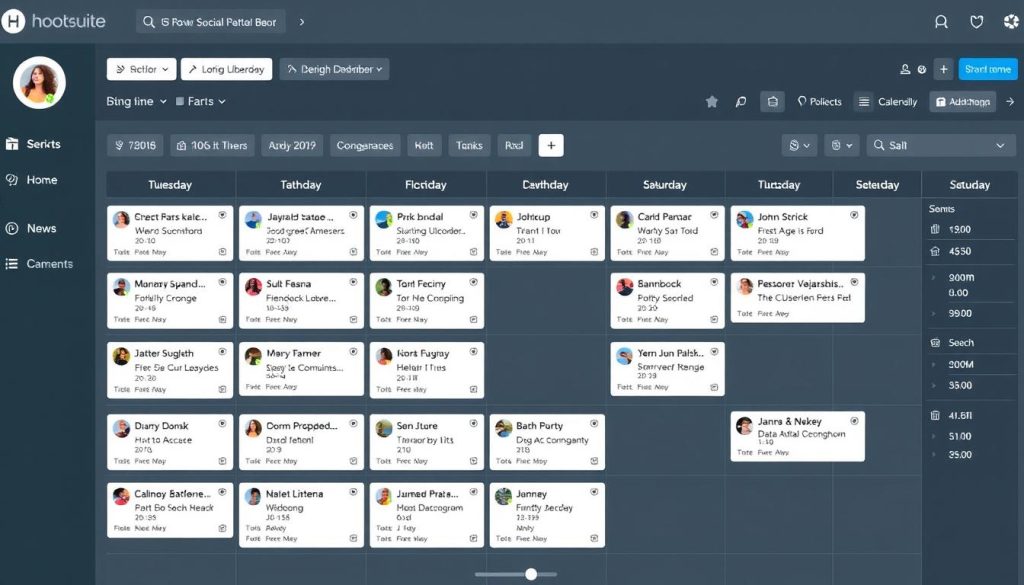
Email Marketing Automation Software
Email marketing automation software enables businesses to personalize and automate their email campaigns, improving engagement and conversion rates. Email marketing automation platforms like Mailchimp, HubSpot, and Marketo offer advanced features for email personalization and tracking.
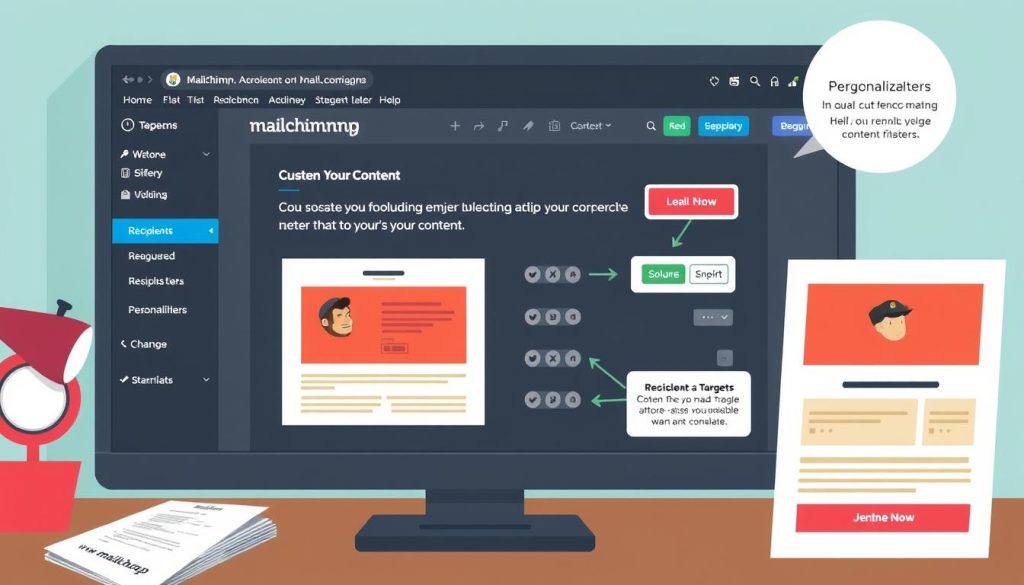
Analytics and Reporting Tools
Analytics and reporting tools are crucial for tracking the performance of content marketing efforts. Marketing analytics automation tools like Google Analytics, SEMrush, and Databox provide insights into key metrics such as traffic sources, click-through rates, and conversion rates.
- Consolidate performance data across channels into unified dashboards.
- Automatically generate periodic reports on key metrics.
- Use advanced attribution modeling to understand which content pieces drive conversions.
- Conduct competitive analysis to track performance against industry benchmarks.
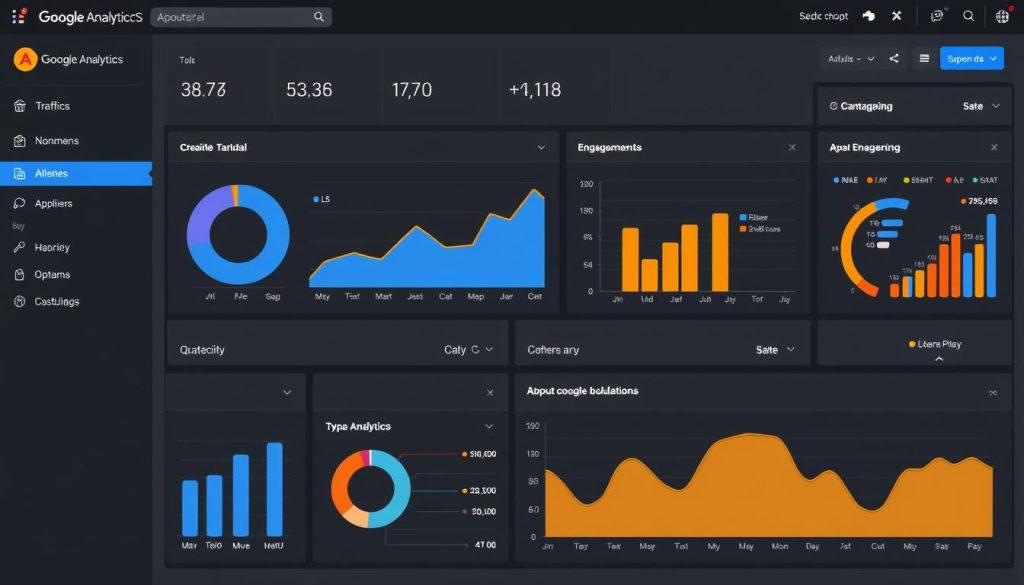
How to Implement Content Marketing Automation
Implementing content marketing automation requires a strategic approach to maximize its benefits. We start by understanding that automation is not a one-size-fits-all solution; it needs to be tailored to your specificmarketinggoals and audience needs.
Setting Clear Automation Goals
To effectively implement content marketing automation, we first need to set clear automation goals. This involves identifying what we want to achieve through automation, whether it’s improving content consistency, enhancing customer engagement, or streamlining our marketing processes. Clear goals help us stay focused and ensure that our automation efforts are aligned with our overall content marketing strategy.
Choosing the Right Tools for Your Needs
With clear goals in place, we then need to choose the right tools for our automation needs. This involves evaluating different automation platforms and tools to determine which ones best fit our goals and marketing processes. We consider factors such as ease of use, integration with existing systems, and the level of customer support provided.

Creating Effective Automation Workflows
Creating effective automation workflows is crucial for successful content marketing automation. We design workflows that are streamlined, efficient, and tailored to our specific goals. This involves identifying triggers, actions, and rules that work together seamlessly to achieve our desired outcomes.
Testing and Optimizing Your Automation
Once our automation workflows are in place, we need to test and optimize them to ensure they’re performing as expected. This involves monitoring key performance metrics, analyzing data to identify areas for improvement, and making adjustments as needed to optimize our automation efforts.
To ensure the success of our content marketing automation, we:
- Implement new automation workflows in phases, testing each component thoroughly before moving to full deployment.
- Establish a baseline of pre-automation metrics to accurately measure the impact of our automated processes.
- Schedule regular reviews of our automation performance, looking for opportunities to refine rules, triggers, and actions based on data analysis.
- Pay special attention to customer feedback during the early stages of automation implementation to catch any negative experiences quickly.
- Create a culture of continuous optimization where team members are encouraged to suggest improvements to automated workflows based on their experiences.
Best Practices for Content Marketing Automation
As we dive into the world of content marketing automation, it’s essential to identify the best practices that drive results. Content marketing automation can be a game-changer for businesses looking to streamline their marketing strategy. However, it’s crucial to strike the right balance between automation and personalization.
Finding the Right Balance Between Automation and Personalization
Automation is only as good as the person programming the software. To achieve the right balance, we must ensure that our automated processes are aligned with our overall content marketing strategy. This involves regularly reviewing our automation workflows to prevent them from becoming too mechanical or impersonal. By doing so, we can maintain a consistent tone and quality in our content while leveraging the efficiency of automation.
Regularly Reviewing and Updating Your Automation Strategy
To get the most out of automation, we need to regularly review our metrics to see how our automated processes are performing. This involves monitoring key performance indicators, gathering feedback from our team and audience, and staying informed about new automation capabilities and industry best practices. By doing so, we can refine our approach, address any underperforming processes, and ensure that our automation strategy remains aligned with our evolving content marketing goals.

Conclusion: The Future of Content Marketing Automation
As we look to the future, content marketing automation is poised to revolutionize the way businesses approach their marketing strategies. With AI and machine learning capabilities expanding rapidly, what’s possible for marketing teams is growing exponentially. According to Demand Sage, a significant trend toward automation in marketing is underway, with 58% of marketers already relying on marketing automation.
The future will bring even more sophisticated personalization capabilities, enabling hyper-relevant content delivery. As automation technology becomes more accessible, small businesses will be able to execute complex marketing campaigns. To succeed, marketers must balance automation efficiency with human creativity, ensuring their content stands out. By embracing content marketing automation today, businesses can adapt quickly to advancing marketing technology.
